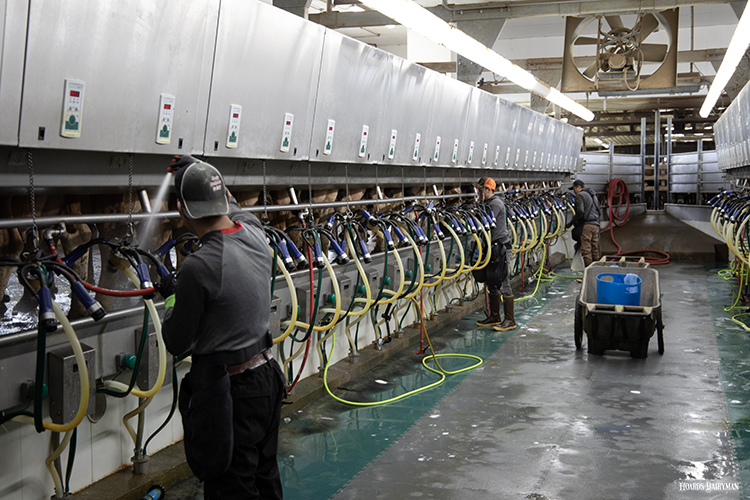
The National Dairy Farmers Assuring Responsible Management (FARM) Workforce Development program offers free resources. These include state and federal legal fact sheets as well as human resource (HR) and safety templates to help dairy owners and managers increase worker engagement, reduce employee turnover, and manage safety hazards associated with dairy farming.
As part of its programming, FARM Workforce Development hosts quarterly educational webinars for program evaluators — the individuals who conduct on-farm assessments and support farmers with continuous improvement. For this year’s first webinar, Dan Deacon of Conn Maciel Carey LLP highlighted recent and potential upcoming changes to federal labor laws, including independent contractor definitions, overtime and wage rules, and Occupational Safety and Health Administration (OSHA) regulations. While FARM’s on-farm assessment tool does not evaluate legal compliance, understanding the legal and regulatory context is essential for advancing adoption of HR and safety best practices.
The Wage and Hour Division of the Department of Labor issued a proposed update to the Employee vs. Independent Contractor classification in October — restoring the “totality of the circumstances” analysis to determine whether a worker is an employee or an independent contractor under the Fair Labor Standards Act. A final rule would limit when a worker may be properly classified as an independent contractor and may be subject to legal action. The Wage and Hour Division is currently reviewing feedback from their public comment period and will provide next steps in the coming months.
The Wage and Hour Division has also held industry stakeholder listening sessions regarding overtime regulations and indicated it will issue a proposed rule to update the salary exemption threshold this year. It is not clear at this time whether the division is also exploring further updates to overtime regulations.
In January 2023, OSHA issued enforcement memos to field offices and state plans that significantly expand the potential for higher fines issued to employers for safety and health violations. One memo expands the circumstances for instance-by-instance citations, while the other reiterates OSHA’s discretion to limit the grouping of citations. OSHA also initiated a rulemaking in January 2023 for the Worker Walkaround Representative Designation Process, which would allow union representatives to participate in OSHA inspections at non-union workplaces, at the request of employees, and be more involved in the OSHA process. Prior to those actions, in March 2022, OSHA also issued a proposed rule to expand the e-recordkeeping requirements planned to be implemented this year, which would require certain high hazard employers to submit OSHA 300, 301, and 300A data to OSHA on an annual basis.
FARM Workforce Development supports dairy farmers in identifying and implementing HR and safety best practices to enhance safe and thriving work environments. Dairy cooperatives and processors representing 60% of the U.S. milk supply participate in the initiative. More than 400 assessments have been completed across 23 states. Visit FARM’s website for FARM Workforce Development resources, including federal and state legal fact sheets.






